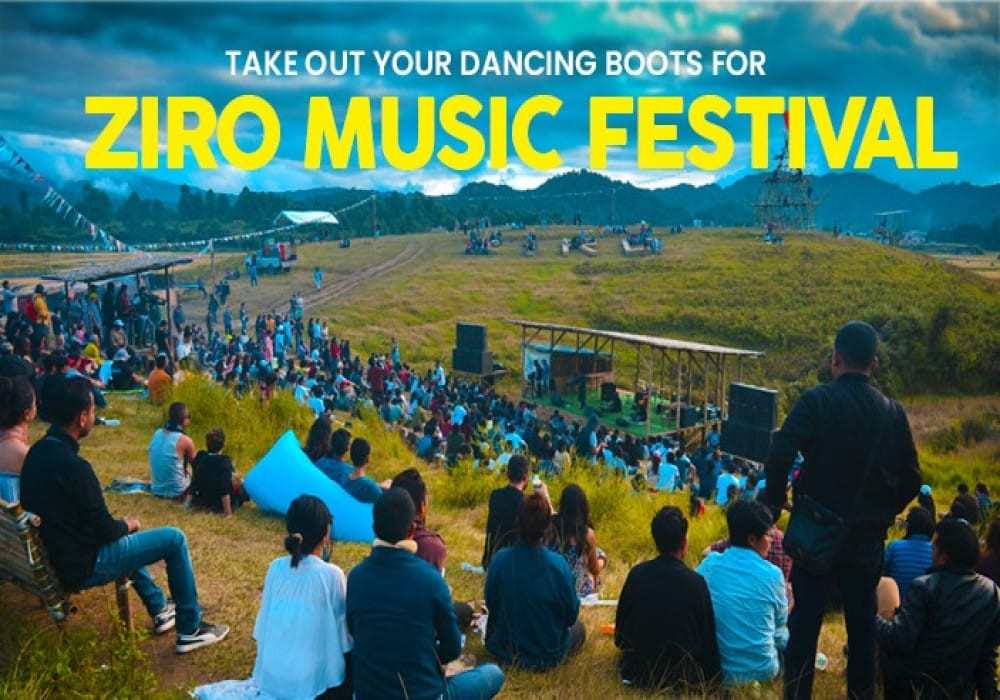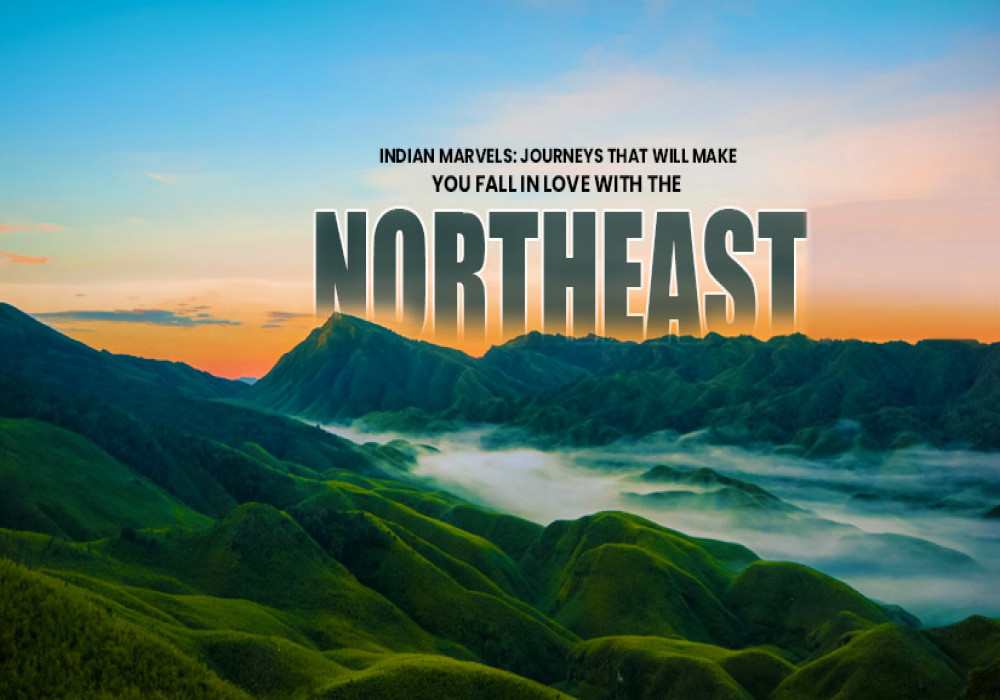
Last Updated At: 21-Mar-2024
10 Famous Temples In Arunachal Pradesh | You Must Visit In 2024
Have you ever wondered where the sun first touches the land in India? Welcome to Arunachal Pradesh, the "Land of the Dawn-Lit Mountains." This beautiful corner of our country is not just a treat for your eyes but also a haven for your spirit. The state is dotted with serene and sacred places, from the mystical Parasuram Kund Temple to the grand Tawang Monastery. These aren't just buildings; they are stories set in stone and prayer, each carrying the whispers of the past and offering a place of peace in today's fast-paced world.
The temples and monasteries here, like the ancient Meghna Cave Temple and the peaceful Urgelling Monastery, are not just about religion. They're about history, culture, and the beautiful ways people have tried to understand the world. Visiting these spiritual temples in Arunachal Pradesh is like walking through a living museum, where every stone tells a story, and every view takes your breath away.
List Of 10 Famous Temples In Arunachal Pradesh
- Parasuram Kund Temple | A Sacred Dip to Redemption
- Akashganga or Malinithan Temple | Where Legends Converge
- Tawang Monastery | Majesty atop the Mountains
- GRL Gompa Monastery | Enclave of Tranquillity
- Urgelling Monastery | Birthplace of Light
- Gorsam Chorten | Reverence Carved in Stone
- Taktsang Gompa | A Revered Haven Amidst Peaks
- Rigyaling Gompa | Serenity in the Shadows
- Meghna Cave Temple | Nature's Sanctuary of Devotion
- Shiv Mandir | Unveiling the Divine Connection
1.Parasuram Kund Temple | A Sacred Dip to Redemption
Nestled in the embrace of the Lohit district, the Parasuram Kund temple stands as a testament to the Hindu faith and its intricate blend of legends. Revered as a pilgrimage site situated in the lower reaches of the Lohit River, it is one of the famous temples in Arunachal Pradesh. Its name originates in the mythic act of Lord Parasuram, who sought solace in these waters, cleansing himself of his sins. But the lore doesn't stop here; it is whispered that the sacred waters of Parasuram Kund witnessed the marriage of Lord Krishna and Rukmini, and also witnessed the meditations of the esteemed Maharishi Vyasa.
Every year, thousands of devoted souls travel to this hallowed site, even spanning across borders, drawing pilgrims from Nepal. However, it's during the Makar Sankranti festival that the temple truly comes alive. On this occasion, as the sun embraces the zodiac Capricorn, over 70,000 devout individuals converge, immersing themselves in the purifying waters. It is believed that this holy dip washes away not just dirt from the body, but the impurities of the soul, leaving pilgrims spiritually rejuvenated.
- Location: Lohit
- Timings: 6 AM to 8 PM
2. Akashganga or Malinithan Temple | Where Legends Converge
Nestled in the scenic embrace of the West Siang district, the Akashganga temple radiates with devotion and ancient tales. Dedicated to Goddess Durga, this temple resonates with echoes of the divine and stories of times past. Here, the Arunachal Pradesh temple architecture, reminiscent of the Odisha style, is a testament to the artistry of the land. But the allure lies not just in its structure.
The legends entwined with this temple are captivating. It is said that when grief consumed Lord Shiva upon the demise of his wife, Sati, Lord Vishnu intervened. The celestial Sudarshan Chakra, an emblem of Vishnu, severed her earthly form into fragments to release Shiva from his attachment. One such fragment is believed to have fallen on the very spot where the temple stands, now known as Akashganga.
Adding to the mystique is the shimmering phenomenon that beckons pilgrims from afar. A glittering object in the distance, vanishing as one approaches, ignites curiosity and devotion. Moreover, a sacred pond adjacent to the temple is whispered to hold the healing power, a tonic for the ailing. This convergence of myths and miracles casts a spell that draws devotees from across the world.
- Location: West Siang
- Timings: 6 AM to 9 PM
3. Tawang Monastery | Majesty Atop the Mountains
Perched amid the lofty heights of Tawang, the Tawang Monastery in Arunachal Pradesh is not just a spiritual abode but an architectural marvel that embraces the heavens. Majestic and sprawling, it claims the title of the second-largest monastery globally, a towering tribute to the Mahayana sect of Buddhism.
Founded in 1680-81 by Merak Lama Lodre Gyatso, this monastery was realised under the guiding wishes of Lama Ngawang Lobsang Gyatso, the fifth Dalai Lama. The monastery, often referred to as Galden Namgey Lhatse by Tibetans, stands tall with three stories and a compound wall stretching 925 feet.
Beyond its awe-inspiring structure, the monastery cradles sacred scriptures like Kangyur and Tengyur, and at its heart, a resplendent 9.3 metres tall golden statue of Lord Buddha. From its serene chambers to its breathtaking vistas, Tawang Monastery transcends earthly bounds, offering devotees a glimpse of the divine against the backdrop of the heavens.
- Location: Tawang
- Timings: 7 AM to 7 PM
4. GRL Gompa Monastery | Enclave of Tranquillity
Bomdila's tranquil embrace houses the Gontse Gaden Rabgye Lling Monastery, a haven of serenity and devotion. Revered by monks and lamas, this monastery, fondly known as GRL Gompa, nestles at a lofty 8500 feet above sea level.
Its foundation, laid in 1965-66 by Tsona Gontse Riponche, is a cornerstone of the Lamaistic faith. GRL Gompa is an architectural triptych that unveils its facets through the upper, lower, and middle domains. The heart of spirituality lies in the upper Gompa, cradling a prayer hall, a school for the progeny of monks, and the very sanctuary of Buddha.
- Location: Bomdila
- Timings: 7 AM to 7 PM
5. Urgelling Monastery | Birthplace of Light
Tucked 5 km south of Tawang lies the Urgelling Monastery, a birthplace of spiritual luminance and historical significance. Gazing upon the Himalayas and the Tawang-Chu valley, this monastery's aura is a homage to the 15th century and the revered Urgen Sangpo, who seeded its roots.
Yet, the year 1683 CE draped Urgelling Monastery in sacredness, when it welcomed the birth of the sixth Dalai Lama, Ngawang Gyamtso. Enlarged and enlivened by Desi Sangye Gyamtso in 1699, this Buddhist temple in Arunachal Pradesh flourishes with resplendent structures, a main temple with a double story, an assembly hall with eight pillars, and the delicate whispers of devotion that have echoed through centuries.
- Location: Tawang
- Timings: 7 AM to 7 PM
Read More : Famous Festival Of Arunachal Pradesh
6. Gorsam Chorten | Reverence Carved in Stone
In the tranquil expanse near Zemithang, the Gorsam Chorten stands as a colossal monument of devotion and craftsmanship. Constructed by Lama Pradhar, a Monpa monk, in the early 18th century, this stupa is more than just an architectural wonder. Its hemispherical dome graces a three-terraced plinth, while miniature stupas adorn the corners of its lowermost terrace. The base, a square boasting sides of 170 feet, houses a continuous niche housing 120 Mani stones within wood frames. Encircling it all, a paved path beckons pilgrims to circumambulate, a journey of reverence and reflection.
- Location: Zemithang
- Timings: 7 AM to 5 PM
7. Taktsang Gompa | A Revered Haven Amidst Peaks
Tucked within the embrace of lofty mountains, Taktsang Gompa, also known as T-Gompa, emerges as a hallowed sanctuary amidst the rugged terrain, 50 kilometres from Tawang. Here, Padmasambhava's legacy pulses. This great missionary, credited with bringing Buddhism to Tibet, left his imprint in spirituality and legend. His footprints on the rocky floor of an adjacent cave speak of his meditation, while the tiger's den he flew upon, imprinted as 'tak' (tiger) and Ttsang' (abode), engraves his memory into every crevice of the landscape. In the highlands of Arunachal, where myths intertwine with miracles, Taktsang Gompa remains a sacred tapestry woven by the hands of ancient beliefs.
- Location: Tawang
- Timings: 8 AM to 6 PM
8. Rigyaling Gompa | Serenity in the Shadows
A mere kilometre away from the heart of Tawang township, Rigyaling Gompa stands as a testament to faith's quiet endurance. The former Rigya Rinpoche's creation carries on his legacy, sheltered by the embrace of trees. The forest, guided by Changsey, the gompa's secretary, wraps it in a natural sanctuary in one of the most beautiful offbeat temples near Tawang, Arunachal Pradesh. As the re-incarnated Rigya Rinpoche, Rev. Tenzin Tsethar, hones his education in South India, the gompa stands as a whisper of devotion, awaiting the return of its spiritual guardian.
- Location: Tawang
- Timings: 6 AM to 6 PM
9. Meghna Cave Temple | Nature's Sanctuary of Devotion
Embraced by the arms of nature, the Meghna Cave Temple paints a picturesque portrait of spirituality. Within its chambers, Sanskrit scriptures meet breathtaking architecture, creating a haven for worshippers and wanderers alike. With the swift river's melody and dense evergreen forests as its backdrop, the temple offers solace and sanctity. The pilgrimage finds its crescendo during Maha Shivratri when devotees gather to pay homage. In the embrace of this serene valley, the Meghna Cave Temple merges architecture, nature, and devotion into a masterpiece of the divine.
- Location: Upper Subansiri
- Timings: Open 24 hours
10. Shiv Mandir | Unveiling the Divine Connection
In the quietude of nature's embrace, a serendipitous discovery ignited a profound connection. While felling a tree during the holy month of Shravana, Prem Subha unearthed a Shiv Lingam. By consulting the best time to visit temples in Arunachal Pradesh before embarking on your temple journey, you ensure arriving precisely when the enchanting blend of nature's splendour and divine reverence is at its zenith within this sacred haven. The fallen tree veered off course, sparing the sacred stone as if destiny intervened. This encounter sparked an unshakable faith, with traces of Lord Parvati and Lord Ganesha adorning the stone. The river's gentle murmur is a perpetual chorus to this newfound sanctum, welcoming devotees year-round to bask in its tranquil aura, merely 4 kilometres from Hapoli townships. As traces of the divine mingle with the tapestry of nature, the Shiv Mandir unveils a connection that transcends earthly bounds.
- Location: Ziro
- Timings: Open 24 hours
Read More : Tourist Places In Arunachal Pradesh
In conclusion, the temples of Arunachal Pradesh are more than just places of worship; they are gateways to understanding the rich tapestry of faith, culture, and history that this region holds. They invite you to pause, reflect, and connect with something larger than yourself. So, in 2024, let Arunachal Pradesh take you on a journey not just through its hills and valleys but through the depths of your own spirit.
Plan your trip with Adotrip today. Enjoy a wealth of information, end-to-end travel assistance and BOOK Flights, Hotels, and Tour Packages under one roof.
With us, nothing is far!
Book Arunachal Pradesh Tour Packages
Frequently Asked Questions About Temples In Arunachal Pradesh
Q1. What are the most revered temples to visit in Arunachal Pradesh?
A1. Some of the most revered temples in Arunachal Pradesh include the Tawang Monastery, Parshuram Kund, Malinithan Temple, and Rukmini Nati Temple.
Q2. Can I learn about the cultural significance and religious beliefs associated with the temples?
A2. Yes, you can learn about the cultural significance and religious beliefs associated with these temples by talking to the local priests, and guides, or by visiting information centres nearby. These places often provide insights into the history and spiritual importance of these temples.
Q3. Are the temples easily accessible by road or public transport?
A3. The accessibility of the temples varies. Some temples, like Tawang Monastery, are accessible by road and public transport, while others, like Parshuram Kund, may require additional travel arrangements due to their remote locations.
Q4. Are photography and videography allowed inside the temples?
A4. Photography and videography rules may vary from temple to temple. Generally, it's best to ask for permission or observe any posted signage regarding photography and videography restrictions when you visit each temple.
Q5. What are the best times to visit the temples for festivals or special events?
A5. The best times to visit these temples for festivals or special events are typically during their respective religious festivals. You can check local event calendars or enquire with local authorities to plan your visit accordingly.
Q6. Are there any nearby attractions or natural wonders to explore along with the temples?
A6. Yes, Arunachal Pradesh is known for its stunning natural beauty. Along with visiting temples, you can explore nearby attractions like Sela Pass, Nuranang Falls, and the picturesque landscapes of the region.
Q7. Can I find accommodations or guesthouses near the temples for overnight stays?
A7. Yes, you can find accommodations and guesthouses near many of the temples in Arunachal Pradesh, especially in more tourist-friendly areas like Tawang and Itanagar.
Q8. Are there any specific customs or rituals to observe while visiting the temples?
A8. It's advisable to dress modestly and respectfully when visiting temples in Arunachal Pradesh. Remove your shoes before entering, and follow any specific customs or rituals observed by the local community. If you are unsure, it is always polite to enquire.
Q9. How do the temples play a role in preserving the cultural heritage of Arunachal Pradesh?
A9. Temples in Arunachal Pradesh often serve as centres for preserving and promoting the cultural heritage of the region. They house ancient artefacts, scriptures, art forms, and religious practices passed down through generations, contributing significantly to the cultural identity of the area.
Q10. Are there any restrictions on entry for non-Hindu visitors at the temples?
A10. In general, many temples in Arunachal Pradesh are open to visitors of all religions and backgrounds. However, it's respectful to enquire locally about any specific restrictions or guidelines, as some temples may have certain areas restricted to non-Hindu visitors or have specific entry rules during religious ceremonies.
--- Published By Adotrip
Latest Blogs

Long Weekends In India 2025 - List of Holidays

Kazakhstan Travel Guide 2025: Affordable Luxury, Visa Free E...

Think Ayodhya is Just Temples? Discover Its Hidden Artistic...

Why Azerbaijan is the Best Budget Friendly Alternative to Sw...







 (1).png)





 Dubai
Dubai Malaysia
Malaysia USA
USA





